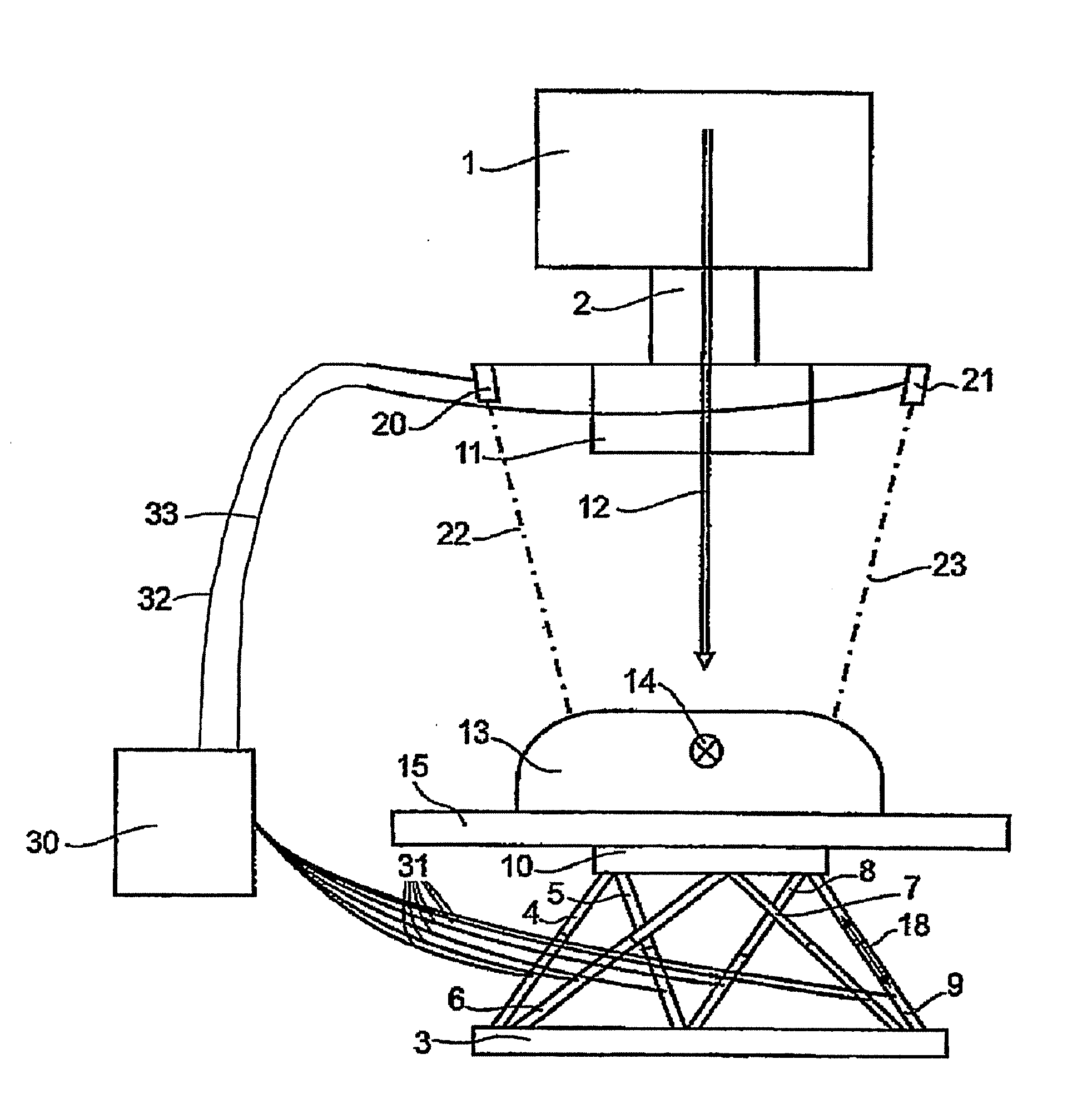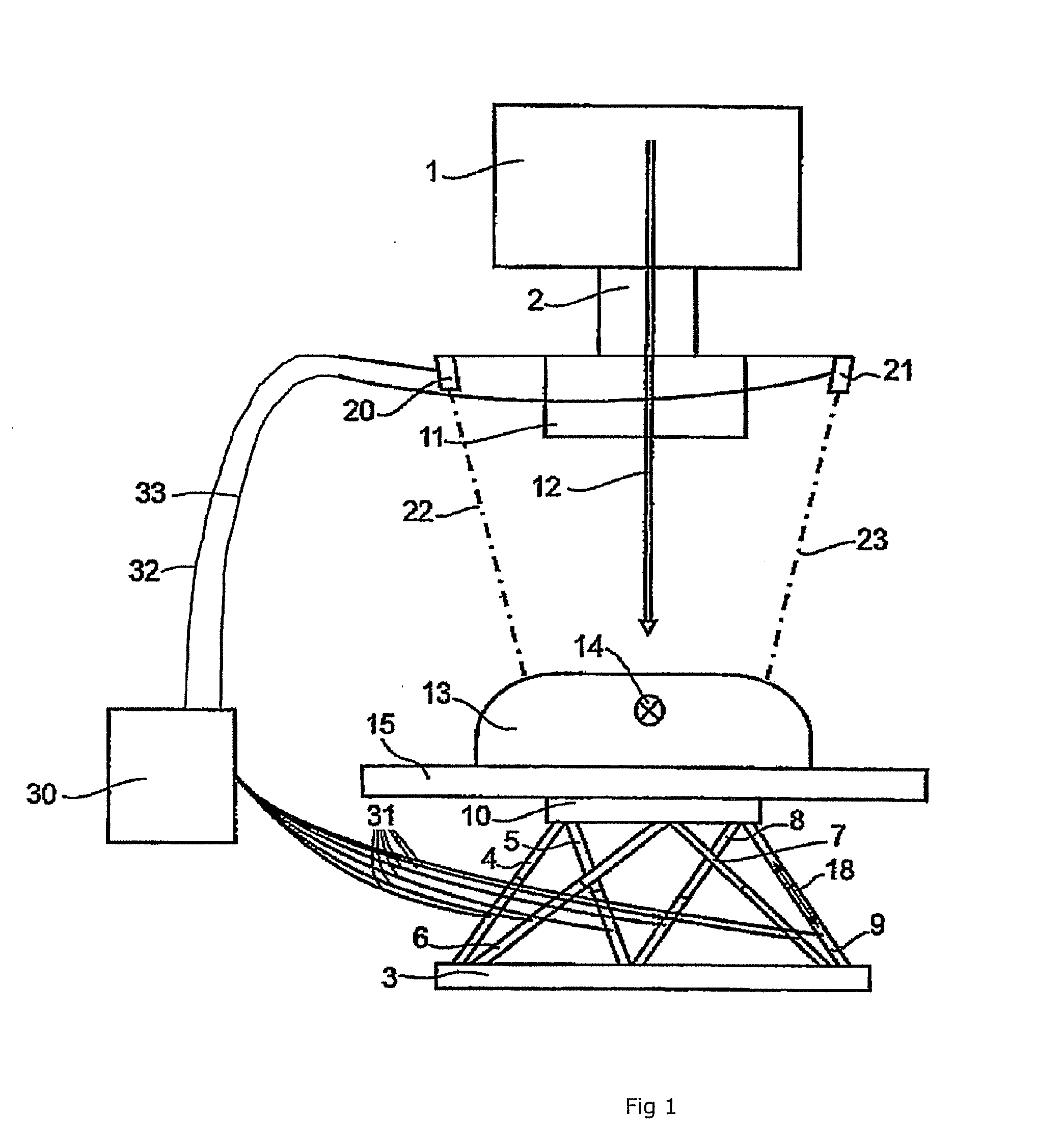Radiotherapy system
a radiation therapy and system technology, applied in the field of radiation therapy system, can solve the problems of difficult or complex apparatuses, and inability to accurately determine the position of patients
- Summary
- Abstract
- Description
- Claims
- Application Information
AI Technical Summary
Benefits of technology
Problems solved by technology
Method used
Image
Examples
Embodiment Construction
[0019]As is shown in the (only) FIG. 1, the radiotherapy system in accordance with the invention comprises a linear accelerator 1. The linear accelerator 1 can assume any desirable shape. It can be arranged as a device standing on the floor, but also as a device mounted on the ceiling. The linear accelerator 1 will usually be fastened to a frame, the so-called gantry. The radiation required for the treatment will be produced in the known manner in the linear accelerator. The treatment beam 12, which is indicated by a respective arrow, thus passes the head 2 of the linear accelerator 1 and a collimator 11. Instead of the collimator 11 it is possible to provide any other desirable focusing or beam guide element, depending on the desired application.
[0020]It is provided for in accordance with the invention that a hexapod is provided beneath the base 15 on which the patient rests. The hexapod comprises two platforms 3 and 10, with the platform 3 being fastened to a secure fixing, and th...
PUM
 Login to View More
Login to View More Abstract
Description
Claims
Application Information
 Login to View More
Login to View More - R&D
- Intellectual Property
- Life Sciences
- Materials
- Tech Scout
- Unparalleled Data Quality
- Higher Quality Content
- 60% Fewer Hallucinations
Browse by: Latest US Patents, China's latest patents, Technical Efficacy Thesaurus, Application Domain, Technology Topic, Popular Technical Reports.
© 2025 PatSnap. All rights reserved.Legal|Privacy policy|Modern Slavery Act Transparency Statement|Sitemap|About US| Contact US: help@patsnap.com


